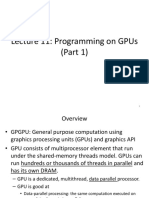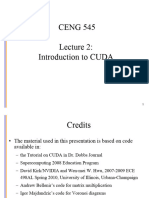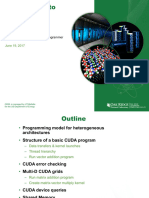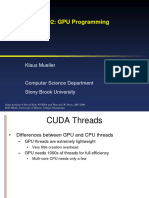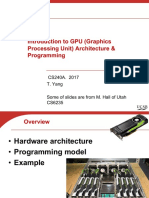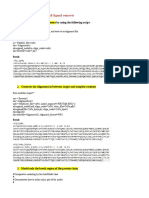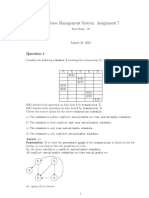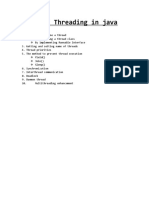0% found this document useful (0 votes)
19 views24 pagesCUDAProg Model
This document introduces the CUDA programming model, focusing on GPU programming, the concept of CUDA kernels, and a simple example of adding two vectors. It explains the Single Instruction Multiple Threads (SIMT) model used in GPUs for high parallel performance, and outlines the basic structure of a CUDA program including memory allocation, data transfer, and kernel execution. Additionally, it covers the compilation process using the NVIDIA CUDA compiler (nvcc) and provides examples of CUDA code and memory management.
Uploaded by
azhagar_ssCopyright
© © All Rights Reserved
We take content rights seriously. If you suspect this is your content, claim it here.
Available Formats
Download as PPT, PDF, TXT or read online on Scribd
0% found this document useful (0 votes)
19 views24 pagesCUDAProg Model
This document introduces the CUDA programming model, focusing on GPU programming, the concept of CUDA kernels, and a simple example of adding two vectors. It explains the Single Instruction Multiple Threads (SIMT) model used in GPUs for high parallel performance, and outlines the basic structure of a CUDA program including memory allocation, data transfer, and kernel execution. Additionally, it covers the compilation process using the NVIDIA CUDA compiler (nvcc) and provides examples of CUDA code and memory management.
Uploaded by
azhagar_ssCopyright
© © All Rights Reserved
We take content rights seriously. If you suspect this is your content, claim it here.
Available Formats
Download as PPT, PDF, TXT or read online on Scribd
/ 24








